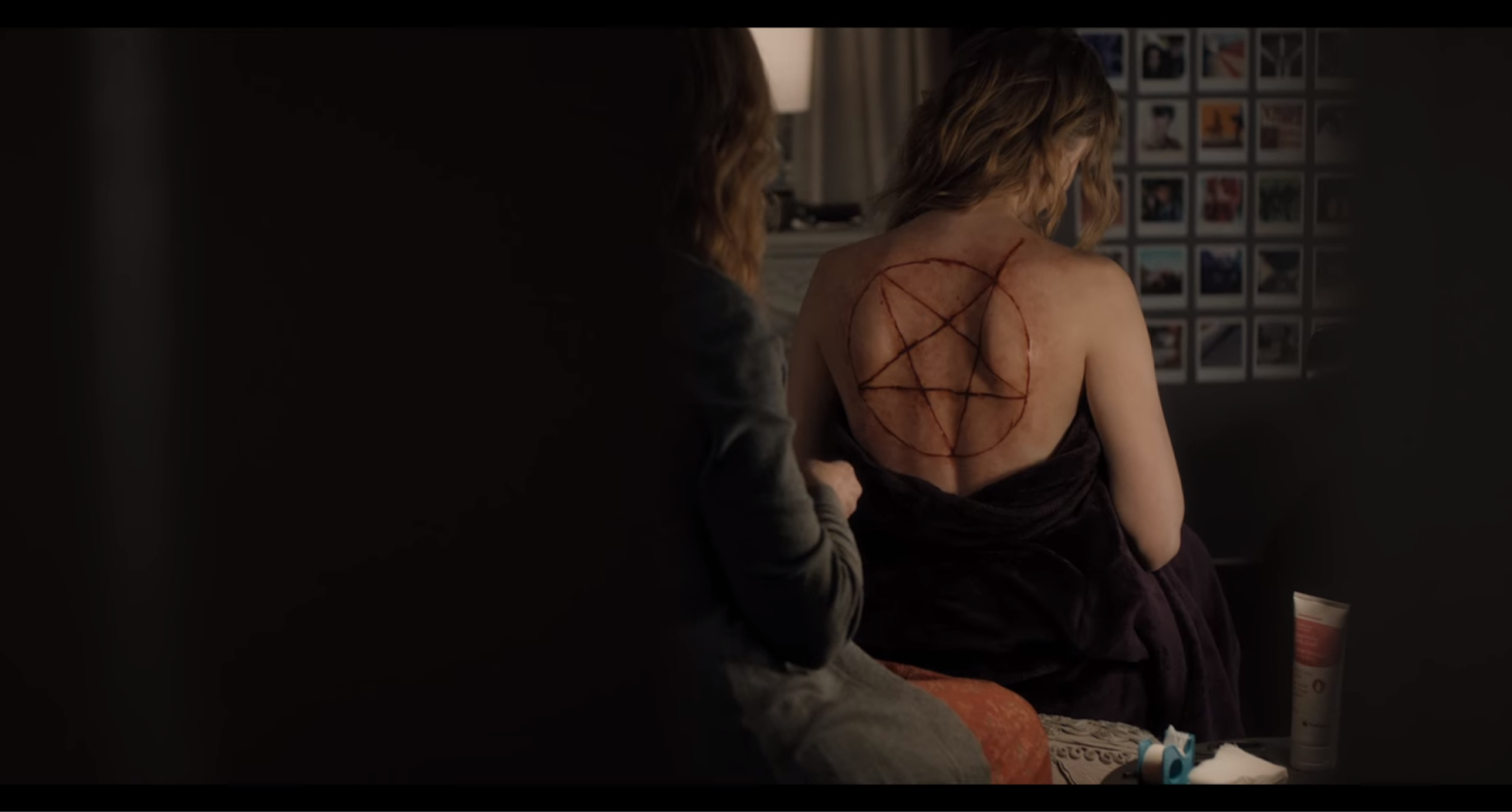September 10, 2022
Will Bates Meets The DEVIL IN OHIO
Interview by Randall D. Larson
In Netflix’s latest thriller DEVIL IN OHIO, created by and based on the book by Daria Polatin, a psychiatrist, Suzanne, is determined to protect a young patient, Mae, who has escaped a mysterious cult, by taking the girl in, inadvertently putting her own family – and life – in danger when she discovers that Mae escaped a devil-worshiping cult in the rural neighboring county.
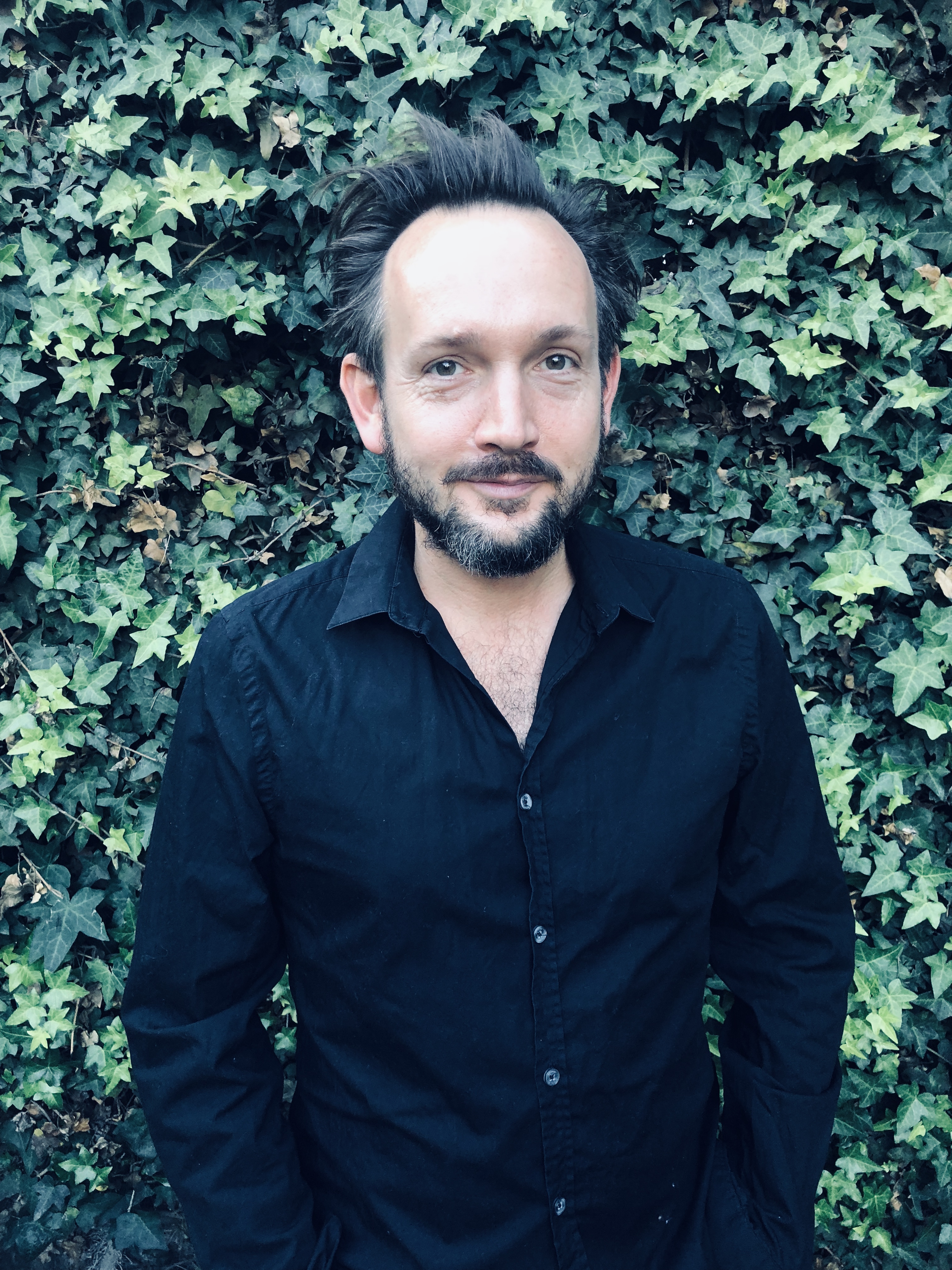
The 8-episode limited series, has been scored by Will Bates, an award-winning composer, multi-instrumentalist, and founder of Fall On Your Sword. He is known for his original scores such as ANOTHER EARTH, I ORIGINS, WE STEAL SECRETS: THE STORY OF WIKILEAKS, the drama/sci-fi series AWAY, SyFy’s THE MAGICIANS, the George R.R. Martin produced series NIGHTFLYERS; Hulu’s series THE LOOMING TOWER. As a solo artist and multi-instrumentalist, Bates has recorded and toured around the globe under the name of his own post-punk band The Rinse and has collaborated with Electric Six front-man Dick Valentine as The Evil Cowards. As a saxophonist, Bates has collaborated with legendary artists ranging from 60’s icon Lulu to techno legend Marshall Jefferson. As a producer and composer, he has worked with a similarly diverse bunch including Mike Rutherford, Roy Ayers, Pussy Riot and Morcheeba’s Skye Edwards. In 2007, Bates created the first of a series of videos under the name Fall On Your Sword; in 2009, Fall On Your Sword evolved into a music production company. Bates currently resides in Los Angeles, which is also the home of Fall On Your Sword’s West Coast studio.
I recently interviewed Will about scoring the DEVIL IN OHIO series.
Watch the trailer to DEVIL IN OHIO:
Q: How did you become involved in scoring DEVIL IN OHIO?
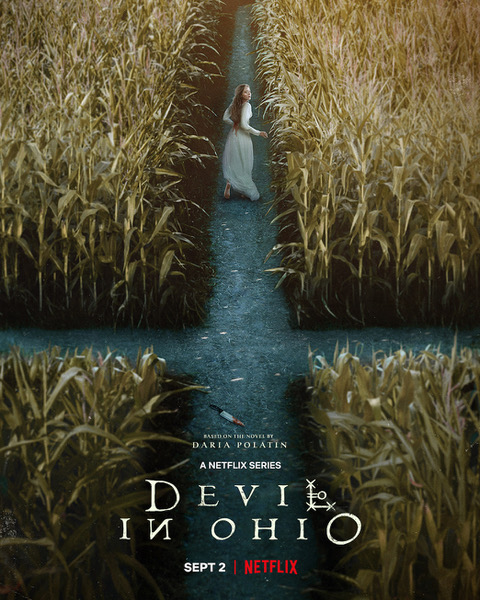
Will Bates: Someone from THE PATH, I believe, had recommended me for the job. That was a show that I did quite some time ago [2016] for Hulu. Daria Polatin had been working on the show for years – I think she wrote the book eight years ago and they developed it for television. I think it took four or five years for all of that to happen – you know how these things are, it takes time for it all to come together. I got involved while they were still shooting and got introduced to the team and we had all of our creative discussions. They got me involved early because they needed the hymn to be written while they were still on set. It appears in Episode 8 but it’s also in the very opening of the show; there’s a little snippet of the hymn. That was quite unusual for a composer to be brought on at that stage, but they needed someone to write that piece so that the actors could sing to it while they were shooting. So I did that and then we talked about the rest of the tone of the score and then I really got to work a couple months after that.
Q: Coming into the project, what were some of those initial discussions with Daria about what she was looking for, musically, in this series?
Will Bates: Tonally it’s a horror show, but there’s other elements – this psychological family drama that’s happening as well – so there needed to be this sort of knife edge of the horror and then the more emotional beats of the score. We wanted it to have a very unique identity. I think, because I had worked on that hymn, it really helped to dictate, at least the beginning sketches for me, what the instruments that I’d be reaching for would be. She told me the hymn would be a satanic hymn, but we wanted to be kind of ambiguous about it, because of the origin; she explained the backstory of the religion and how it’s from 19th Century on, and I talked about maybe there could be some kind of Gaelic modality that’s in there, and maybe some Celtic instrumentation and that kind of thing. So writing the hymn, strangely, helped inform some of those other choices. There’s a lot of hurdy-gurdy and early music instrumentation that I used to create a lot of the themes. For the more bombastic, percussive moments I’m using a lot of smaller Irish percussion like the bodhrán and the Celtic harp and things like that. Of course there’s a lot of strings, but we wanted it to be a smaller ensemble – it was never going to be a big sweeping orchestral kind of thing; there needed to be a certain amount of intimacy. So it tended toward more solo instrumentation.
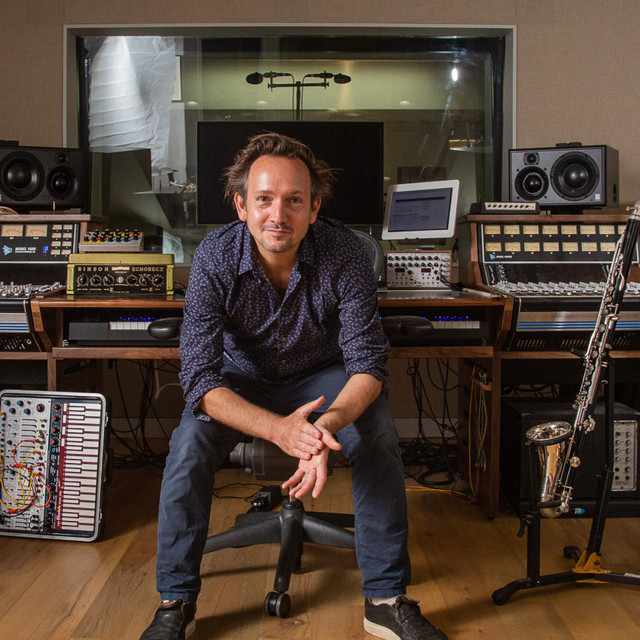
Also, vocals were something we talked about right at the beginning, that there would be this female vocal element. When I wrote the hymn I had my dear friend and collaborator Maiah Manser sing it, and she’s very featured throughout the rest of the score. I was having her do all sorts of weird stuff – I’d write some melodies and then flip the melody and have her record it flipped so that then I would reverse her in a sort of David Lynch Red Room thing! There’s a lot of these weird backwards melodies, since we’re dealing with the devil. That was fun to find the cool stuff you can reach for!
Listen to the track “Salvation From the Dawn” from DEVIL IN OHIO, sung by Maiah Manser, via YouTube:

Q: Without giving away any spoilers, how did you treat the character of Mae as she is developed across the story’s arc and we learn more about her?
Will Bates: At the beginning I felt like her melody was very connected to the cult that she came from, and as we get further in, with that sort of reversing that I was talking about, that’s what I was doing with her melody. Maiah’s vocal is being manipulated and she’s doing this backwards version of the melody as more and more is revealed about Mae’s character throughout the course of the show. I gave it more definition in what’s going on with that melody as I get to that. It’s really fun to plant those seeds early on in the TV show and then you can develop them over the course of the season.
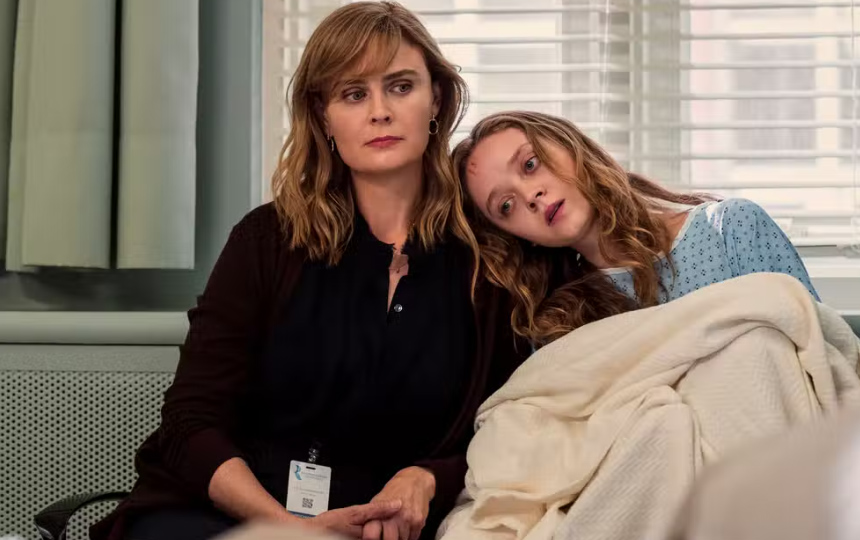
Q: How did you musically treat the mother, Suzanne, as her character advances through the plot?
Will Bates: Her theme was that sort of Eureka moment that I feel I always have to have at the beginning of a project, where I feel like I’ve found the melody of a character – I’ve found that person’s voice. That happened in the pilot, when Suzanne is comforting Mae, and Mae still isn’t talking to her yet, but she puts her head on her shoulder in the hospital, and there’s a theme that comes up there. We started to define it as “Suzanne’s Trauma Theme” because it’s more complicated than just “Suzanne’s Theme.” I feel like you learn more about these characters, and with Suzanne she’s obviously trying to rescue people and have that deep mothering instinct but she’s also very much a victim of her own past and her own trauma. So there’s a lot of moments where I was able to take the melody that exists there in that first episode and use it in the flashbacks during Episode 2, where you get a quite disturbing glimpse into her domestic abuse when she’s a child, and then taking that melody and putting it through different effects. It’s a useful tool.
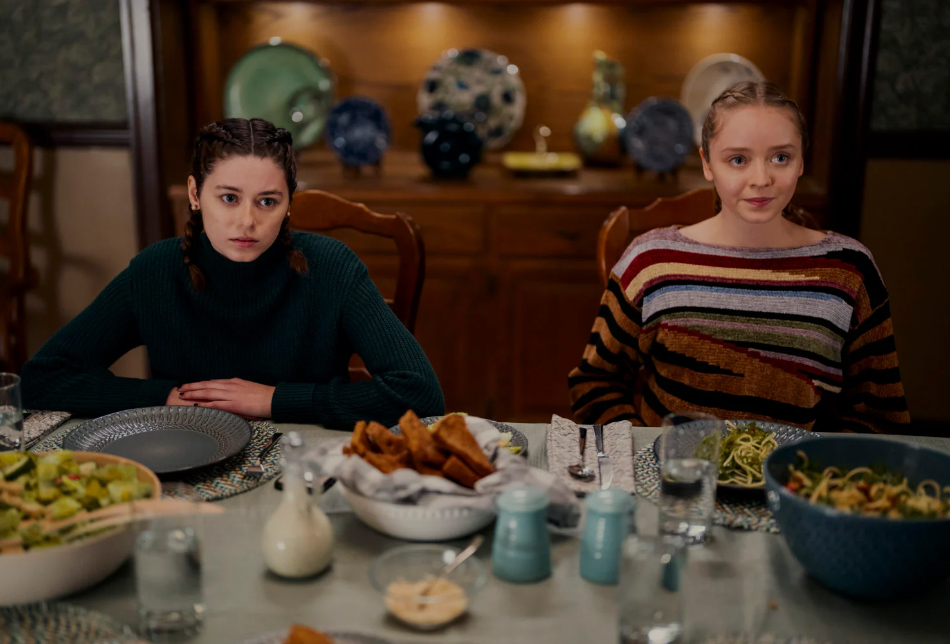
Q: The other characters, Suzanne’s husband and kids, have their own story arcs as the series develops. How did you treat them musically?
Will Bates: For Peter, Suzanne’s husband and the kids’ father, we developed a low string motif. He’s obviously trying to keep the family together but not succeeding and having some of his own failures, so there’s often this kind of masculine theme that’s defining his character. For Jules, the middle daughter, at first I had an electronic thing for her but as the story develops and we see her friends and allies, she seemed to require something more like source music, so we tended to move further towards songs for her character and her scenario; but that isn’t to say that there aren’t moments where she influences some of the other themes. I used more analog electronic beds for her whenever she’s with Mae – I tended to modernize the palette, where it’s almost like she’s influencing Mae, who’s got this very antiquated upbringing, so Jules’ influence is sort of modernizing it.
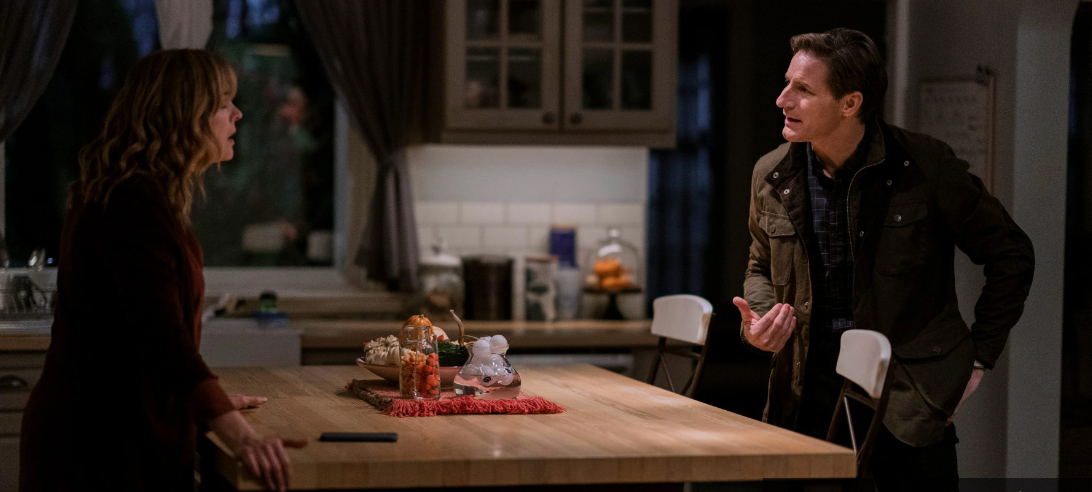
Q: How did you come up with the opening main theme, co-composed by Bishop Briggs, and how does it define the tone of the series storyline?
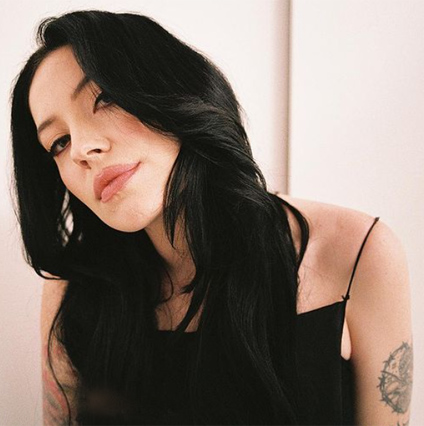
Will Bates: Normally when a composer works on a main title, we tend to do it really early on in the process. But for one reason or another that ended up happening much, much later. I had pretty much finished the score for the whole show, so I already knew the palette and everything, and was introduced to Bishop by the producers, who wanted us to write a song together. I went to a show of hers – I’d already started working on a sketch, and I knew her work, I knew her song “River.” She invited me to watch her perform and I was just absolutely blown away and I realized I needed to push this thing a bit harder. So I went back to the studio that night – she has such an incredible range and power, and I knew that I could throw the kitchen sink at this thing, so to speak, and she’d be able to soar above it. So I gave her quite a developed sketch and then she mapped out the melodic ideas and came up with the lyrics and she came down to the studio and we just had a couple of fantastic sessions, and she just killed it. She was such a perfect choice for the singer for that piece of music and for the show; it had such a strong identity that she totally got, straight away. Obviously, Daria had some impact, lyrically, but Bishop pretty much came up with the whole idea of the “Lessons of the Fire” song.
Listen to the track “Lessons of the Fire” from DEVIL IN OHIO, sung by Bishop Briggs via YouTube:
Q: How do you find the contrast between scoring a limited series such as this, versus a film score? What kind of technique do you find works best in creating music for a multiple-episode series?
Will Bates: At the beginning I feel like it’s almost the same – I always have that same part of the process where I feel like I have to just be alone in the studio, come up with these melodies, and have that Eureka moment, like I mentioned. And then I’ll start to share ideas with the producers or the director. I think ultimately the biggest difference with television is just the scale of it. Even when I’m working on a movie, I tend to always keep everything in the same session, if that makes sense. With a movie, I’ll have the whole movie in one giant session so that I’m able to grab little ideas from all of that – that thing from that scene would be really cool here, or I should develop this sound with her instrumentation, or whatever. With a movie, that’s easier. With those sessions for television, eventually my computer wants to fall over! So, I’m finishing an episode and I get to the end, I literally pack everything into a folder and I hide it, and then I get to work on the next episode. Then I have those ideas, “Oh, it would be really cool if I could take that theme and throw it out of context in this sequence in Episode 3, and I can go back and grab those elements. So I think it’s just the scale of it and the amount of organization that you have to have to do television. With movies, for whatever reason – at least the one’s that I’ve wrote on – tend to have a lot more time; with television it’s always a bit of a mad sprint. But I have to say I kind of love that! I like to just go with my initial instincts and run with it, as opposed to overthinking things. The TV deadline is good for that – that’s for sure!
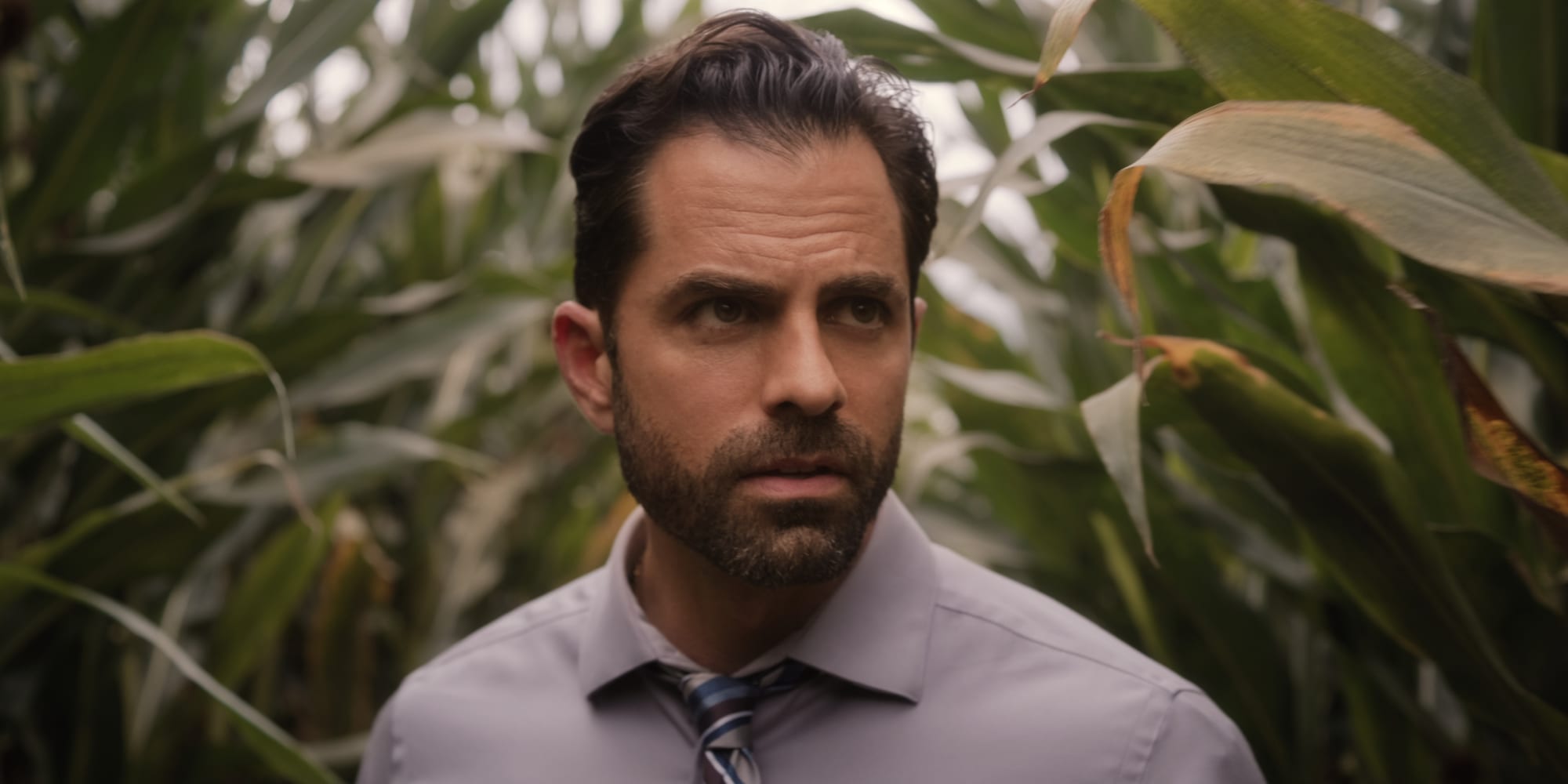
Q: There’s a rather haunting musical moment in Episode 2 when the Detective Lopez searches the cornfield and confronts a grisly kind of scarecrow. How did you configure the music for this moment?
Will Bates: For that one I was using the hurdy-gurdy. I love using this very strange, wonky instrument I had built for me a few years ago by a guy in Michigan. It’s been a bit abused! It’s like a hand-crank thing with sympathetic strings and whatnot. But this one is on its last legs, and because of that, it has this fabulous wonkiness to it! I’d never be able to play it on stage or anything, because it’s so horribly out of tune, but when you crank it, the cycling of the strings is very eerie and creates this wonderful bed, so I find myself using it almost as a percussive thing as well; using the crank super-harshly and getting more percussive sounds out of it. So I used that with some processing, pitch-shifting and whatnot, using a harmonizer. I also do this thing with Maiah’s vocal, I think it’s in that scene where he sees the scarecrow, there’s a kind of howling in it. I’m taking little of Maiah’s vocals and pitching them down and running them through the Eventide [processor] and reversing them and making weird noises. I try to sort of reach for the hardest possible way of doing things!
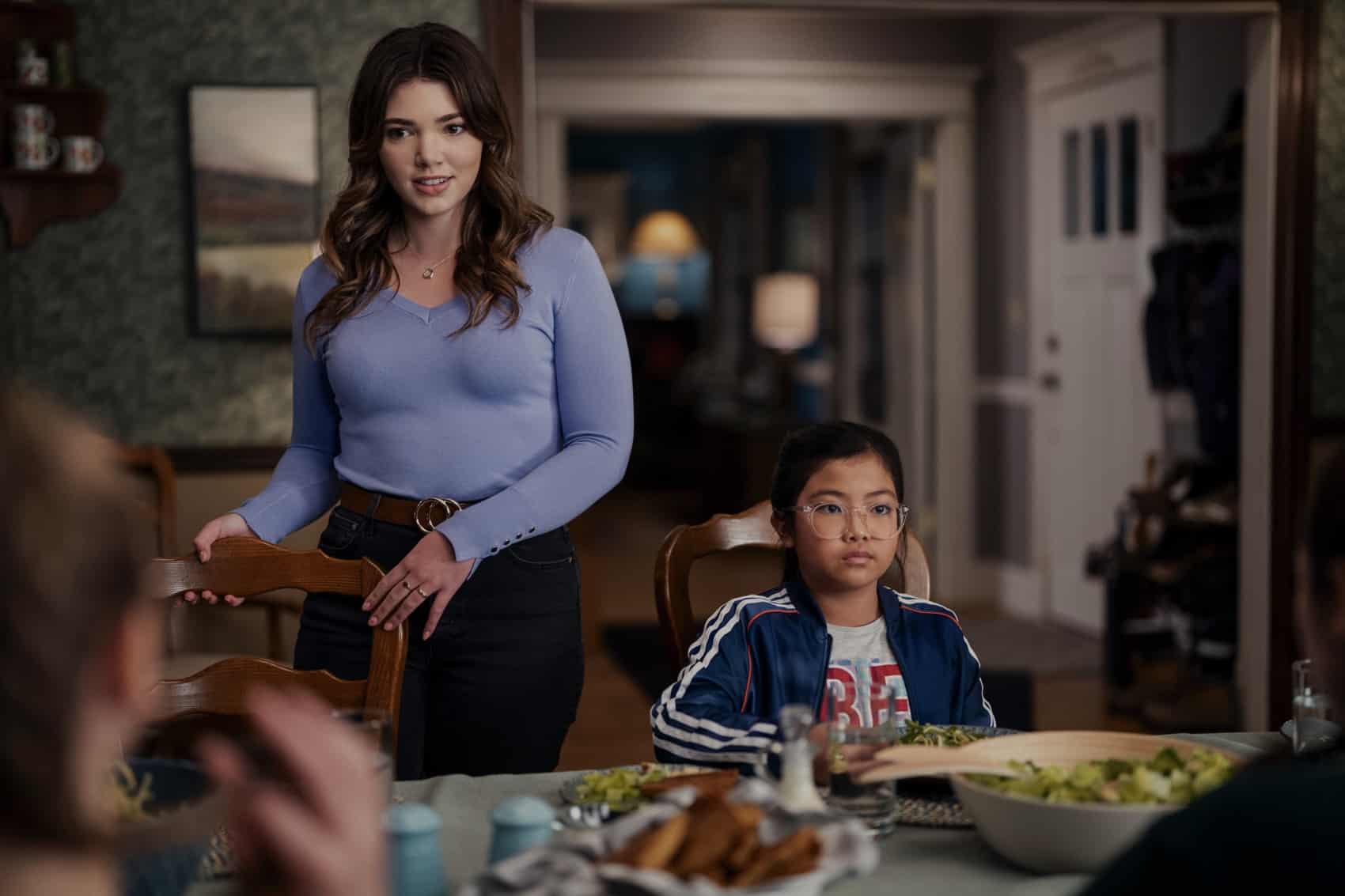
Q: What were some of the other scenes where you need to do some scares or create frightening moments in your score, and how did you achieve those?
Will Bates: There’s always some percussive elements to those scenes. I have quite a massive collection of weird old percussion instruments in the studio. There’s a room in the back that we call The Orphanage and it’s where all the old instruments that I own go to die – things that I’ve bought over the years for specific projects, and it tends to be a great resource. So I’ll grab the odd drum and just bang things and have a couple of sessions creating hits and percussive moments. I think, in the end, even with a score that’s very analog, I do tend to reach for quite a lot of modular synths and dial in my own synth sounds and run things through amps and all that kind of stuff, to give it that kind of specific identity.
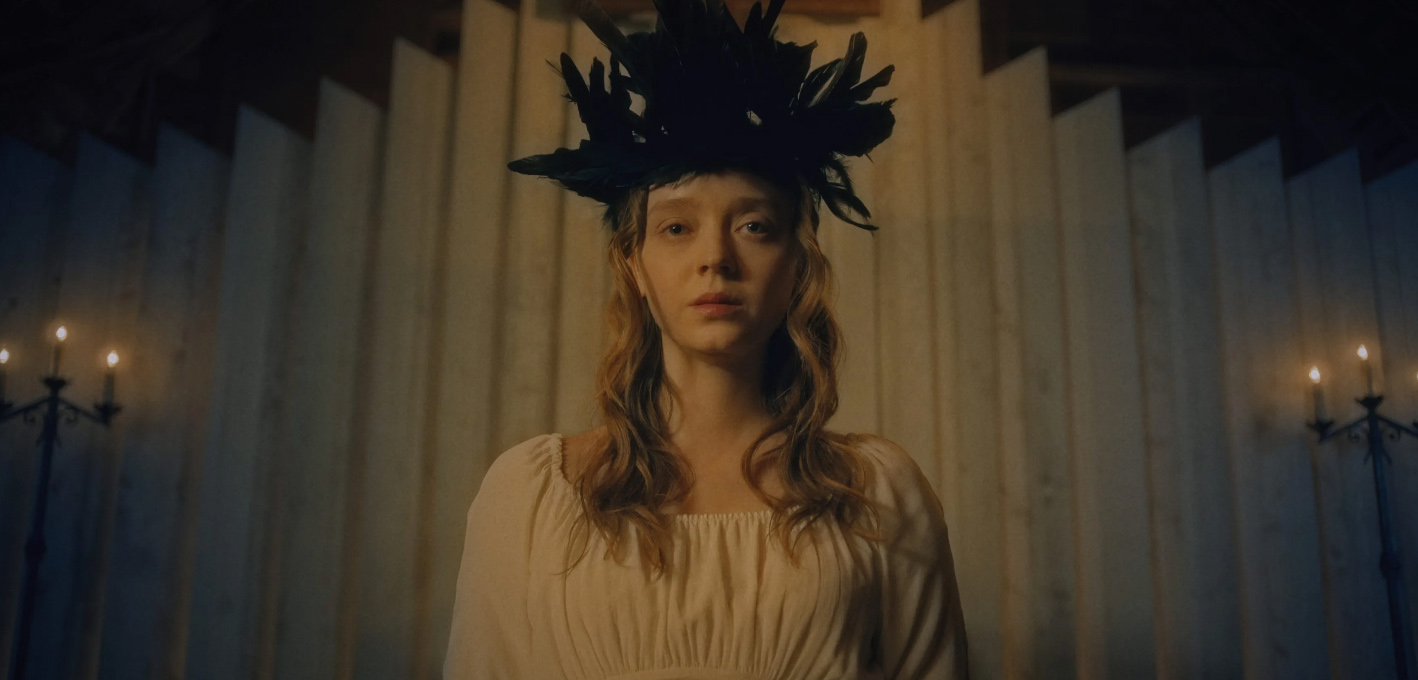
Q: There’s also a brooding use of choir in your score, especially during flashbacks of the cult Mae comes from, such as the scene where Mae is given the crown of crow feathers…. What can you tell me about your use of choir in these moments?
Will Bates: That’s all Maiah. I would find myself writing parts for her, and the way that I’ve worked with her in the past is kind of the same way that I work with a lot of my other musicians – I have a wonderful violinist who’s played on this score, called Lev Zhurbin, who’s in New York. I’ll write a part for him as MIDI and just send him a PDF and he’ll record in his apartment and send it back to me, and I work much the same way with Maiah. I’ll write a three- or four-part harmony piece and we’ll have a quick conversation on the phone about what I’m looking for, and she’s just extraordinary and will just record way more than I’ll ever need, giving me tons of options. I tend to layer-her voice up and have different articulations, different syllables, that kind of thing. This show was the first time I’ve really dug into a real kind of choral sense like that.
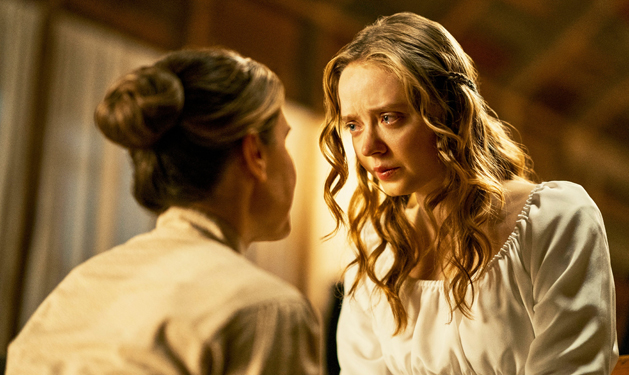
Q: How did you interface your instrumental score around the series’ use of songs, like “Hymn for Nuns” and “Salvation of the Dawn?”
Will Bates: The hymn, obviously, is something that is threaded throughout the score. It appears a few times in Episode 1, which was the first time I tried that backwards thing. There’s a tiny little flashback at the hospital where I have Maiah singing “Salvation of the Dawn,” like flipped around, so she had to learn how to sing it in reverse, which was pretty crazy! I loved that idea so much that I started to use her as a melodic tool later on, away from the hymn. That was a really fun resource, to have the hymn. The song, “Lessons of the Fire” – the score was done by the time that came around, so it wasn’t really influencing the score for the show so much.
Q: Again, without giving any spoilers, would you describe how you designed your music for the film’s end reveal and finale?
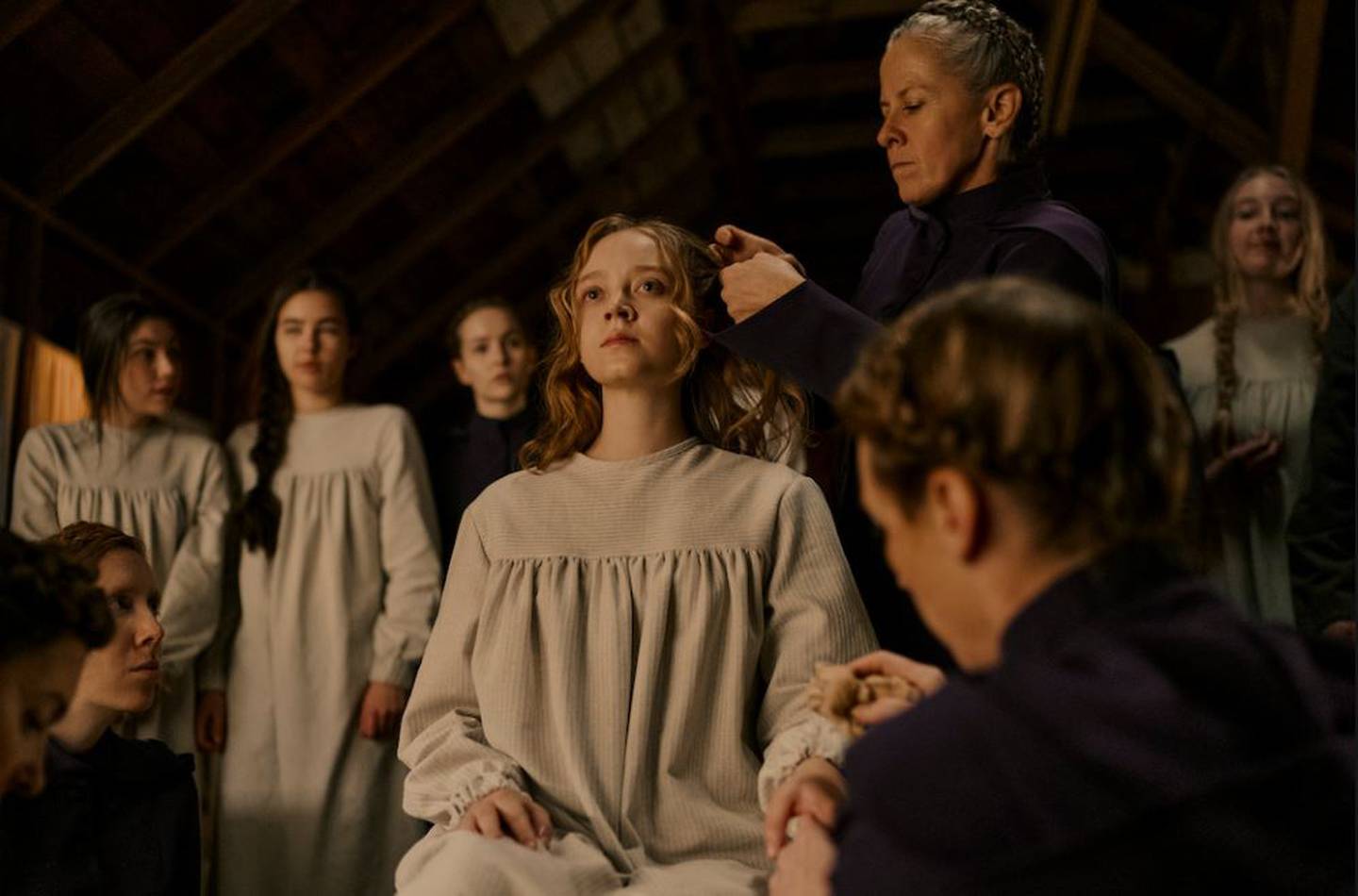
Will Bates: I would say that it’s kind of a cohesion of all of the thematic elements coming together. There’s a few different emotional storylines that are coalescing and that was an opportunity to have those things all come together as one. There’s a momentum as well to the whole end sequence. I do remember working on it with Daria; we did it a few times because she would saying “You’ve got to burn it down, man! Make it bigger!” So it was really pushing it. I have to say that working with her in that regard was just amazing. She’d constantly surprise me by how much further she wanted to push the role of music. It’s not every day where you get to unleash like that! She always had such good ideas, like things I hadn’t thought of thematically and really playing with the idea of scale, which was wonderful.
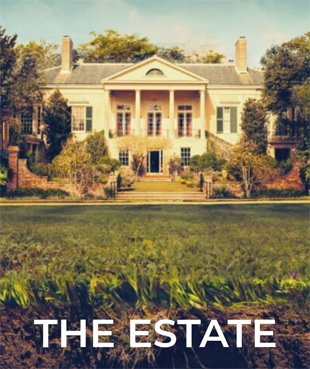
Q: What’s next for you that you are able to talk about?
Will Bates: I just finished a movie called THE ESTATE, directed by Dean Craig, which is heading to the London Film Festival. That movie is a dark comedy starring Kathleen Turner, Toni Collette, Anna Farris, and David Duchovny, and it couldn’t be further away from the DEVIL IN OHIO score. THE ESTATE is kind of a bebop jazz score reaching back to my roots a little bit – I started life as an alto sax player. So that’s been really fun; I was able to put a little combo together, and it’s just a hilarious movie.
Thanks to Alix Becq-Weinstein and Jana Davidoff of Rhapsody PR for facilitating this interview, and especially to Will Bates for an insightful and enthused conversation!
For more information on Will Bates, see his website https://www.fallonyoursword.com
